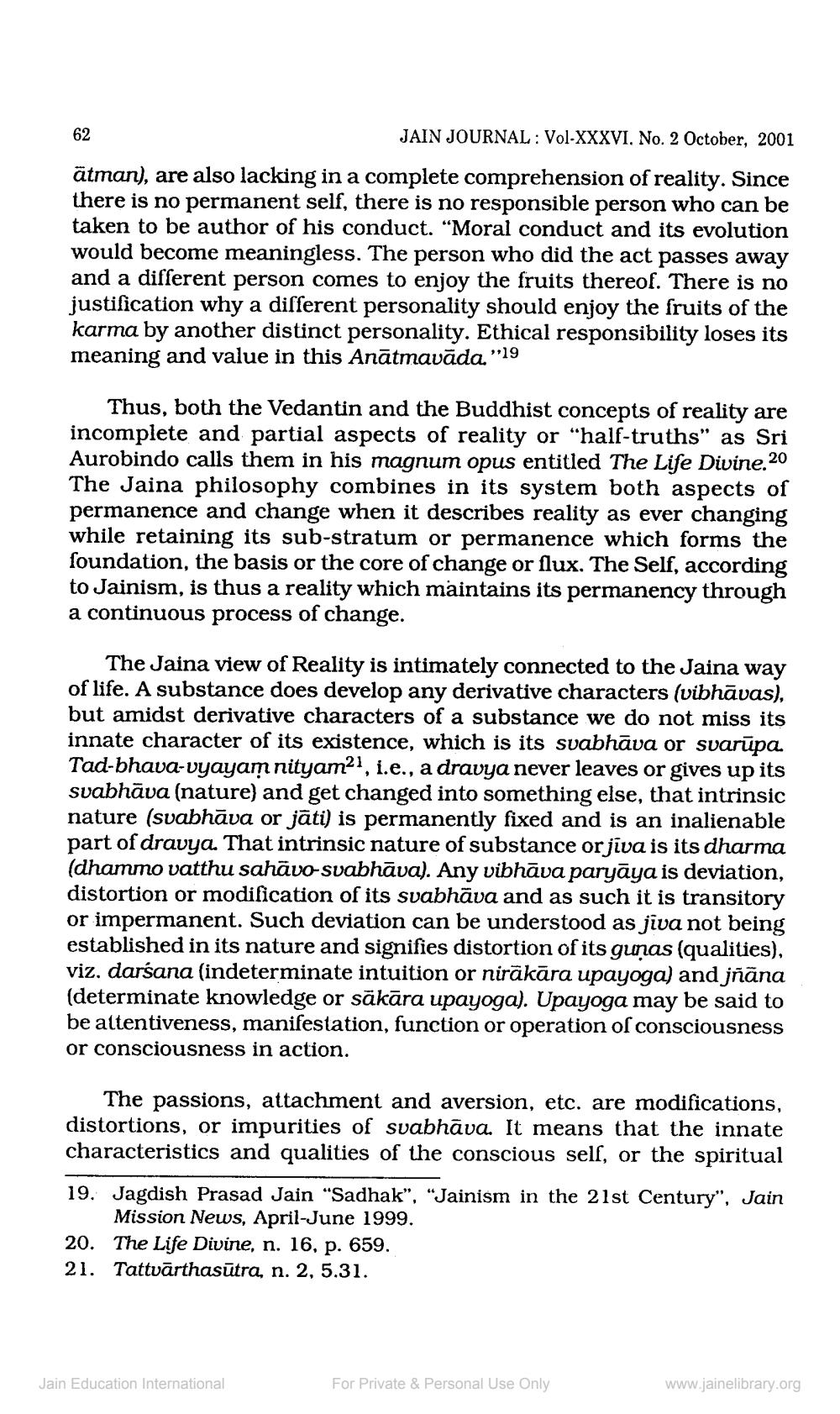Book Title: Jain Journal 2001 10 Author(s): Jain Bhawan Publication Publisher: Jain Bhawan Publication View full book textPage 8
________________ 62 JAIN JOURNAL: Vol-XXXVI. No. 2 October, 2001 ätman), are also lacking in a complete comprehension of reality. Since there is no permanent self, there is no responsible person who can be taken to be author of his conduct. “Moral conduct and its evolution would become meaningless. The person who did the act passes away and a different person comes to enjoy the fruits thereof. There is no justification why a different personality should enjoy the fruits of the karma by another distinct personality. Ethical responsibility loses its meaning and value in this Anātmavāda."19 Thus, both the Vedantin and the Buddhist concepts of reality are incomplete and partial aspects of reality or "half-truths" as Sri Aurobindo calls them in his magnum opus entitled The Life Divine 20 The Jaina philosophy combines in its system both aspects of permanence and change when it describes reality as ever changing while retaining its sub-stratum or permanence which forms the soundation, the basis or the core of change or flux. The Self, according to Jainism, is thus a reality which maintains its permanency through a continuous process of change. The Jaina view of Reality is intimately connected to the Jaina way of life. A substance does develop any derivative characters (vibhāvas), but amidst derivative characters of a substance we do not miss its innate character of its existence, which is its svabhāva or svarūpa. Tad-bhava-vyayam nityam?), i.e., a dravya never leaves or gives up its svabhāva (nature) and get changed into something else, that intrinsic nature (svabhāva or jāti) is permanently fixed and is an inalienable part of dravya. That intrinsic nature of substance or jiva is its dharma (dhammo vatthu sahāvo-svabhāva). Any vibhāva paryāya is deviation, distortion or modification of its svabhāva and as such it is transitory or impermanent. Such deviation can be understood as jiva not being established in its nature and signifies distortion of its gunas (qualities), viz. darśana (indeterminate intuition or niräkāra upayoga) and jñāna (determinate knowledge or säkāra upayoga). Upayoga may be said to be attentiveness, manifestation, function or operation of consciousness or consciousness in action. The passions, attachment and aversion, etc. are modifications, distortions, or impurities of svabhāva. It means that the innate characteristics and qualities of the conscious sell, or the spiritual 19. Jagdish Prasad Jain "Sadhak”, “Jainism in the 21st Century", Jain Mission News, April-June 1999. 20. The Life Divine, n. 16, p. 659. 21. Tattvārthasūtra, n. 2, 5.31. Jain Education International For Private & Personal Use Only www.jainelibrary.orgPage Navigation
1 ... 6 7 8 9 10 11 12 13 14 15 16 17 18 19 20 21 22 23 24 25 26 27 28 29 30 31 32 33 34 35 36 37 38 39 40 41 42 43 44 45 46 47 48 49
